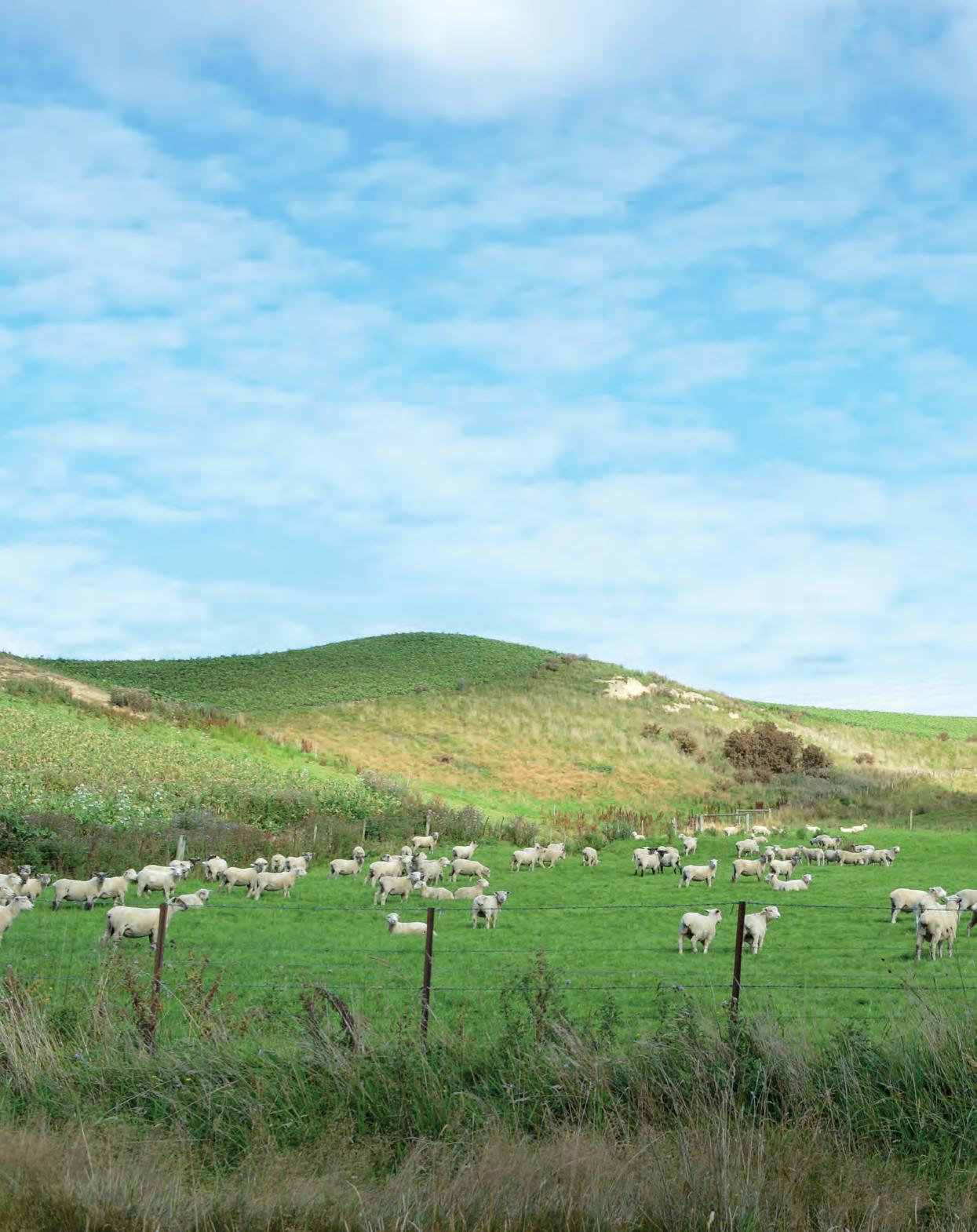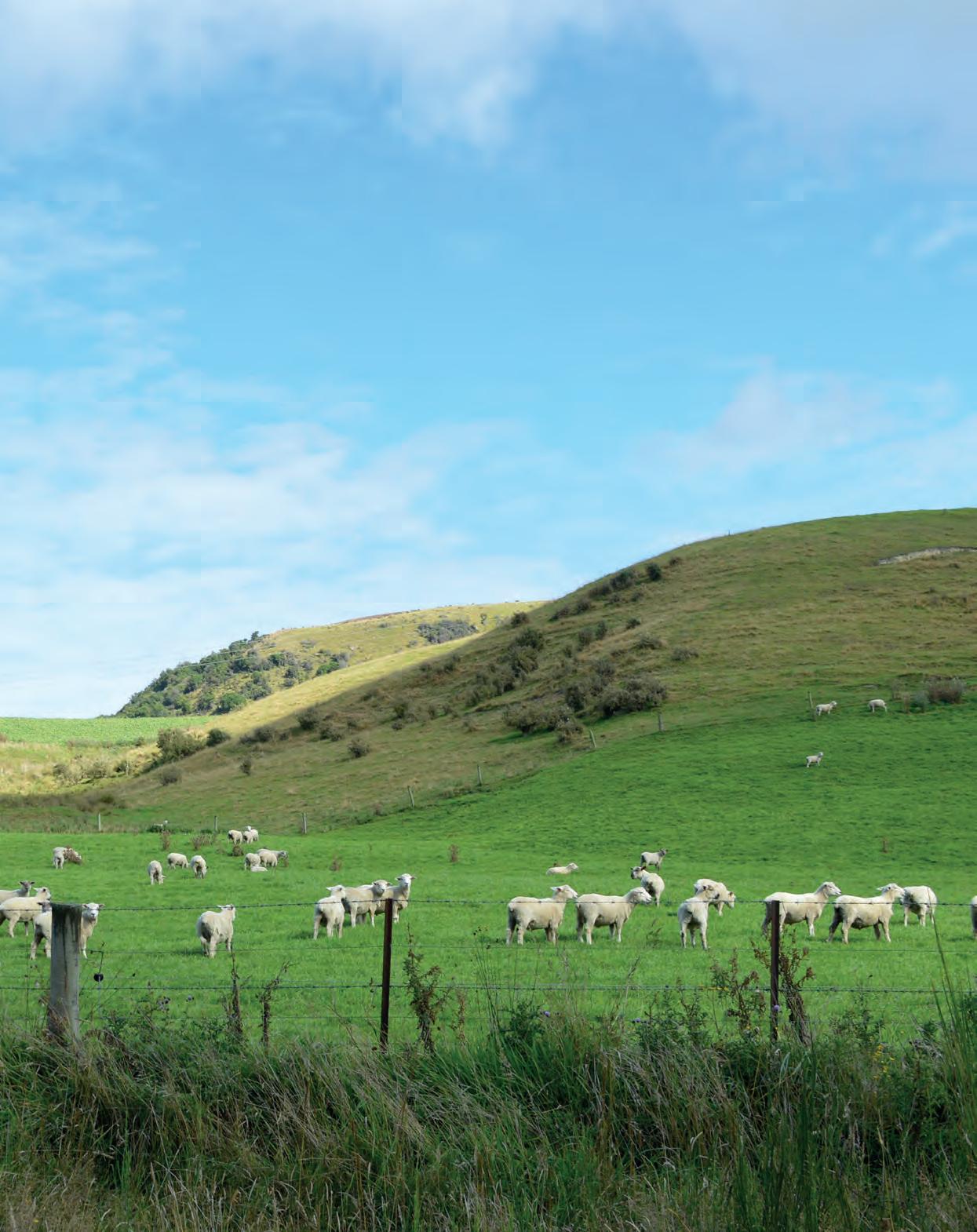
4 minute read
Checking in for spring
Health and safety is a crucial part of any business or home life. As we get comfortable with our day-to-day jobs, we can get complacent when keeping ourselves and our families healthy and safe, which can lead to disastrous consequences.
Farmlands’ Card Partners are experts in their field and take the wellbeing of their customers seriously. To enable you to make the most of your spring season, several of Farmlands’ Partners have put together their top tips to ensure your on and off-farm crew stay as safe as possible. Don’t let the rush of spring catch you off guard. Make sure you have your health and safety practices sorted to give yourself, your family and your business the best chance for success.

Check your skin with MoleMap
MoleMap are skin cancer detection specialists and have a proven skin-mapping system for identifying early signs of the disease. You can check your own skin for early signs of melanoma by following the ABCDE rule.
• Asymmetry – Check that the shape of one half of the mole does not match the other. • Border – Check if the edges are ragged or irregular. • Colour – Check if the colour is uneven. • Diameter – Check if the size changes or increases. • Evolving – Look for new moles or change in existing moles.
For more tips on checking for melanoma, go to www.molemap.co.nz/melanoma/how-to-identify

Check your tyres with Bridgestone
Bridgestone has a global reputation as the tyre industry market leader and has developed a simple test for you to find out whether the tyre tread on your on and offfarm vehicles will be up to spring conditions. To measure your tyre’s tread depth, place a 20c coin in one of the central circumferential grooves of your tyre. If you can see the whole of the number 20, that indicates your tyre has 2mm or less tread left. If you’re hitting this mark, it is time to think about investing in some new tyres to make sure you stay safe while driving.
Check your hearing with Triton Hearing
Has hard work damaged your hearing? Have you noticed that you are: • Turning the TV or radio up louder than usual? • Finding it difficult to follow conversations, or focus on the person you are talking to? • Struggling with background noise? • Catching yourself lip reading? • Does it sound like people are talking very quietly or mumbling? • Are conversations at work becoming a challenge?
If you answered yes to any of the above questions, you’re not alone. In New Zealand, about 1 in 6 people experience hearing loss. Triton Hearing has been specialising in hearing healthcare for 3 decades and offers a free hearing check.
To book yours, visit https://clinics.tritonhearing.co.nz/ search to find your local clinic or call 0800 45 45 43.

Check your insurance with FMG
Despite best efforts, accidents can happen. Often it’s not always the accident itself but the recovery that can be most difficult to cope with. While ACC provides excellent support, it does have its limits so it’s worth thinking about the costs and impacts of an injury or illness such as medical and rehabilitation costs. Have you also thought about whether you’ve got enough savings to provide an income for your dependants if you can’t work due to injury or illness? Health insurance can provide cover for surgery, related expenses and specialist costs plus more. Income and Key Person insurance can ensure you are still receivingan income in the event you are unable to work, taking the stress off when you need it most to recover. Not knowing what your Life and Health insurance options are and not making decisions to prepare for the future can make things even harder, so make sure you get insurance plans in place early.
Check your height hazards with NZ Safety Blackwoods
What tasks does your farm have that involve working at heights? Before you get above the ground, remember the ABCD of height safety systems: • A – Anchorage: Make sure you have a secure point of attachment to structure for a fall arrest system (this can be temporary or permanent). • B – Body harness: A harness provides a connection point on the worker. • C – Connector: Make sure you’ve got strong devices to connect the worker’s full body harness to the anchorage system, for example lanyard, self-retracting lifeline (SRL) etc. • D – Descent/rescue: Rescue and retrieval of a fallen worker is a required component of any fall arrest system. Make sure you’ve got a rescue kit and tripod on hand.










